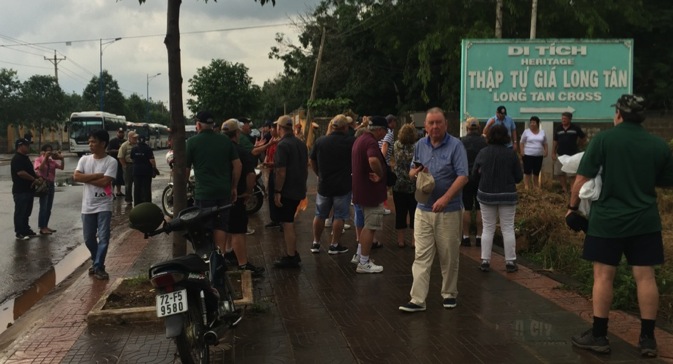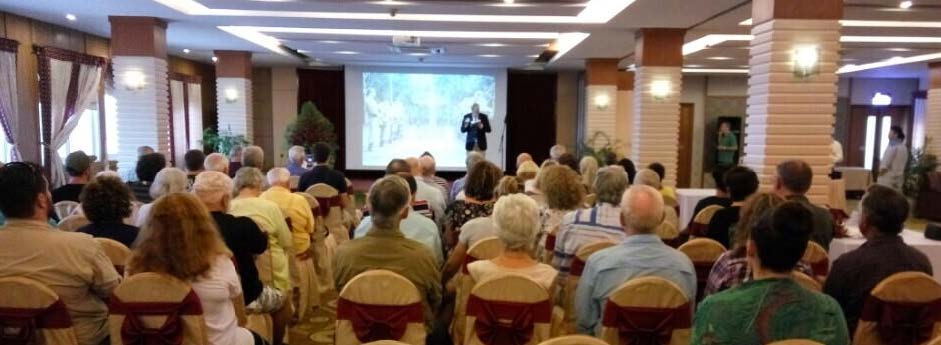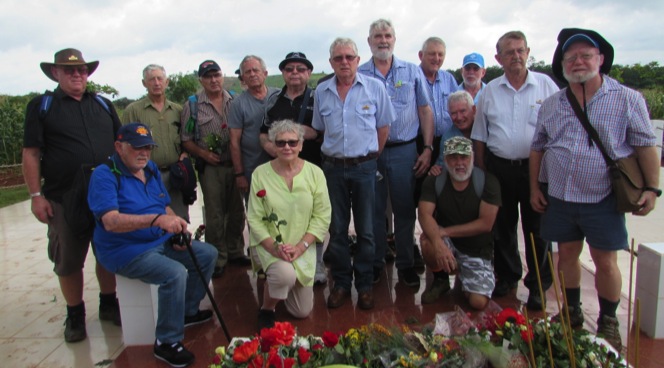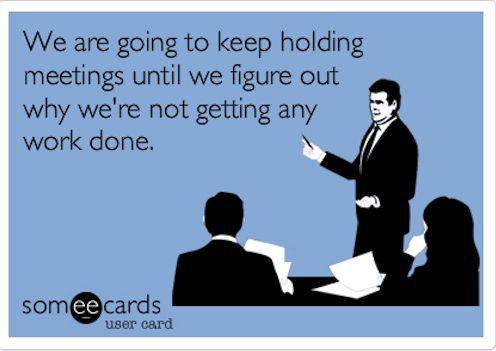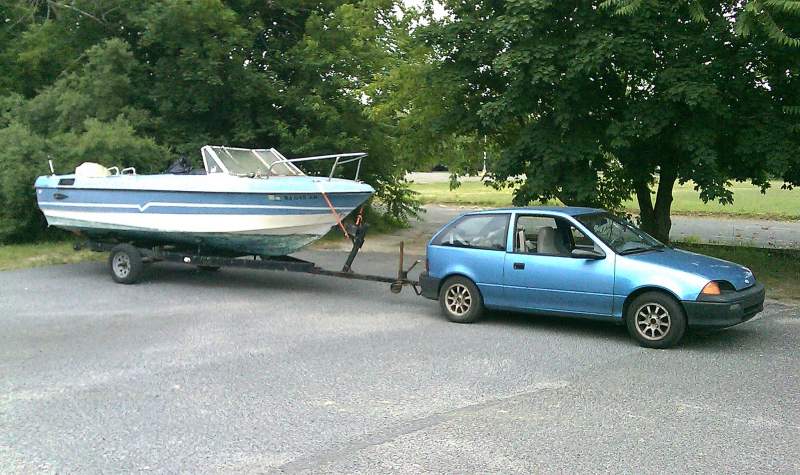|
|
|||||||||||||||
|
|||||||||||||||
|
Privacy Policy | Editorial Policy | Profit Policy | Join the Association | List of Members | Contact us | Index | Links |
|||||||||||||||
|
Back Go to page: 1 2 3 4 5 6 7 8 9 10 11 12 13 14 15 16 17 18 19 20 Forward
|
|||||||||||||||
|
Out in the Shed with Ted.
Ted McEvoy. |
|||||||||||||||
|
|
|||||||||||||||
|
This page is brought to you compliments of the Kedron Wavell Services Club, Brisbane’s superior Club.
|
|||||||||||||||
|
Pensions.
Below are the new DVA pension rates for those eligible. These rates came into effect on the 20th September and will be amended again on the 20th March next year.
|
|||||||||||||||
|
|
|||||||||||||||
|
DVA administers two distinctly different pensions, (1) the Disability Pension, and (2) the Service Pension. If you served in the ADF you could be eligible for one or both. DVA has a website (HERE) which sets out the eligibility criteria for each and if you think you’re eligible, first thing to do is have a look at the site and if the cap fits, go and see an advocate and have him/her submit your claim. Don't try it yourself as a majority of DIY claims fail.
DVA Concessions.
Some concessions available to holders of DVA and Pensioner Concession (PCC) cards are made available by the Commonwealth but the majority are provided by individual States and in some cases, by some local councils.
We have prepared a list of what concessions are available, on a State by State basis and it is available HERE. You will be able to print it out using your browser.
Vietnam Vets Association WA.
A few weeks ago, the Vietnam Veterans’ Association of WA (Inc) received a grant from the Department of Veterans’ Affairs to produce a documentary of interviews with WA people who were involved with the Vietnam War.
Besides including the usual suspects (ie. Army, Navy and AirForce), other people were interviewed including entertainers, Salvation Army and the brother of an Army KIA.
I managed to get a gig, click the pic below to watch the video.
You can see all the interviews HERE
Robots: Eliminating the First Contact with an Enemy Force
Things are changing, going to war is going all hi-tec, it seems to
us they are trying to make that most dangerous of past-times - safe.
Why should commanders send their troops out front, at huge personal
risk, when robots and/or
The people who make these sorts of momentous decisions say "We should be thinking about having a robotic vanguard, particularly for manoeuvre formations, there's no reason why the first contact with an enemy force should be with a man-platform, because it means that platform is at the greatest risk."
The US Army's chief roboticist recently said, “A robot doesn't feel pain and suffering if it gets blown up, we want it to be the bullet catcher who takes those rounds. Besides taking the hit, robots could pinpoint and uncover the direction from which the enemy is firing”.
Over the last 10 years, the US Army has focused on logistical challenges in Iraq and Afghanistan. A lot of Soldiers were lost in convoys that encountered improvised explosive devices and the funding and research went into stopping that. The Army's demonstration of driverless vehicles took place in May 2014 at the Department of Energy's site in South Carolina, where a convoy consisting of seven different tactical vehicles drove completely unmanned at speeds exceeding 65 kph. Once that technology matures and is fielded, the problem arises, "if you replace 16 drivers with 16 autonomous vehicles, you've just lost 16 M-16s that the drivers would be carrying to protect the convoy so you'd need to consider arming the autonomous vehicles, with a Soldier being the remote triggerman."
Today, the effort is still in logistics, but current thinking and doctrine is that robots should be more than logistics; they should be in the fight as well. The Marines tried this with a robot in Afghanistan, a mule-like device that followed a patrol dismounted. It was rated to carry 500 kg but the Marines loaded it up with 1,000kg. Then they complained it was too slow. So in the future perhaps robots need to be able to talk back and say, "Sir, I can't carry that." Currently, testing of vehicles is being done on-road, but off-road is where Soldiers fight. Future robotic development may go to warp speed by using modelling and simulation, saving time and money by plugging scenarios into computers and testing vehicles in dirt, mud, snow, sand, rain and so on.
To get a peek at the future, look at what's being done already. The Army teamed with Sikorsky and Lockheed Martin to rig a Black Hawk helicopter to fly autonomously carrying a robot as its payload. It flew without the aid of a pilot to its destination, dropped off the robot and flew back. Had it had problems along the way, say with its engine, a sensor was programmed to look for possible landing sites along the way. As well, the robot payload, which was sling-loaded, was balanced by the computer, which gave it even more stability in-flight than a pilot could have done. Robots will someday interact with other robots like that.
In Australia, an experiment will soon take place where an operator in the U.S. will remotely guide a robot through the outback with just a second of latency from control to action using satellite technology. It will also be red-teamed, meaning that operators will try to hack into it to take control away from the "friendly" operator.
Robotics isn't new! For example, in the 1950s, the Army developed a robot called Little David, which was driven by remote control. It had a TV camera on it, a machine gun and even a flame thrower. Other nations, including the Soviets, had similar systems. The problem back then was taking it off road, especially in tough terrain like Korea and Vietnam.
That's the problem that the US Army's looking to solve currently, it will eventually get solved, but it will take some time.
|
|||||||||||||||
|
The Gallipoli Bar at Kedron Wavell Services Club.
The Gallipoli Bar has something for everyone.
FREE LIVE BANDS.
From 8.30pm every Friday and Saturday night in the Gallipoli Bar will have free live music acts to entertain you while you enjoy a drink and relax in one of our many seating areas.
To view upcoming free live music acts click here.
TRIVIA THURSDAYS.
From 7pm in the Gallipoli Bar Grab a group of friends and test your wits in our free trivia challenge. Lots of great prizes to be won! First prize is a MASSIVE $100 Kedron-Wavell Kash. Second prize is $50 Kash plus plenty more giveaways throughout the night.
SUPER SATURDAY.
From 4.30pm in the Gallipoli Bar Free Party Pies from 4.30pm 12 plasma TV’s covering ALL the live sporting action Free live band on stage from 8.30pm.
The Gallipoli Bar is a great place to meet your mates and share a few coldies.
|
|||||||||||||||
|
|
|||||||||||||||
|
|
|||||||||||||||
|
Amazing.
|
|||||||||||||||
|
|
|||||||||||||||
|
Old Father Time!
Where has the time gone? The older we get the faster time seems to go. Does everyone feel that or is it only me?
For instance, it was a mere 50 years ago that these were the latest!!
|
|||||||||||||||
|
|||||||||||||||
|
It was a time when Ward Pally Austin was king on the New UW in Sydney and Don Lunn was on the Greater 3UZ in Melbourne, and it was when THIS great old song came along.
|
|||||||||||||||
|
The secret to a long life.
A doctor on his morning walk, noticed a little old lady sitting on her front step smoking a cigar, so he walked up to her and said, "I couldn’t help but notice how happy you look! What is your secret?" "I smoke ten cigars a day, she said. Before I go to bed, I smoke a nice big joint. Apart from that, I drink a whole bottle of Jack Daniels every week, and eat only junk food -- on weekends, I pop pills, have sex, and I don’t exercise at all. "That is absolutely amazing! How old are you?" he asked.
"Forty", she replied
|
|||||||||||||||
|
Vets’ entitlements.
There are alarmist emails circulating in the veteran community about
possible new veterans’ legislation being drafted. It is true that
the Government intends to introduce a Bill to make a standalone
version of the Safety, Rehabilitation and Compensation Act 1988 (SRCA)
for current and former Australian Defence Force (ADF) members but
this would only
Should the new Act be passed by Parliament, eligibility and benefits under the Act will be the same as those currently available to serving and former ADF members under the existing SRCA. The new Act (if passed) will be the same as the current SRCA, so there will be no change to existing entitlements or access to benefits. The Bill simply replicates the SRCA, there are no additions or any other changes.
This new Bill has been discussed for some time – it was referenced in a March 2015 media release of the former Minister for Veterans’ Affairs.
The Veterans’ Entitlements Act 1986 and the Military Rehabilitation and Compensation Act 2004 will remain in place and will be unchanged by the new Act.
|
|||||||||||||||
|
Auto windscreen wipers.
Nowadays automatic windscreen wipers can be found in lots of new cars, but wipers that activate themselves when it rains and adjust their speed when it gets heavier or lighter weren't always commonplace—nor did they work as seamlessly as they do today.
In the past, car manufacturers tried all sorts of schemes to control the wipers. Some involved detecting the vibrations caused by individual raindrops hitting the windshield, applying special coatings that did not allow drops to form, or even ultrasonically vibrating the windshield to break up the droplets so they don't need to be wiped at all. But these systems were plagued by problems and either never made it to production or were quickly axed because they annoyed more drivers than they pleased. General Motors has a historical link to the automatic wiper blade. In 1996, the Cadillac STS, Eldorado, and DeVille featured Rainsense, the first system that could see rain and activate without driver input. It hit the Buick brand months later with the debut of the 1997 model year Park Avenue. Earlier attempts at automatic wipers, like on the 1970 Citroën SM, weren't so sophisticated. The Citroën system adjusted the intermittent wiper delay based on the electrical current draw of the wiper motor. A wiper blade glides more smoothly over a wet windshield, using less energy and a control circuit in the SM used that to indirectly determine if rain was present. But the SM was an expensive and relatively rare car, and there were few other attempts at improving upon the basic intermittent wiper.
GM still calls its automatic system Rainsense and its basic function hasn't changed much since 1996. Back then their system sensed rain from a module mounted which was on the inside of the windscreen, behind the rearview mirror. It contained eight LEDs and a set of light collectors. When the weather was dry, the LED light bounced off the windscreen and into the collectors. But when a raindrop landed in front of the module, some of that light would refract away from the collectors, and the system would trigger the wiper blades to swipe.
Twenty years ago this was incredibly high tech. Early versions of the GM system required the driver to activate the automatic mode and the wiper blades would move up from the parked position. It worked, mostly. Conditions like fine mist from road spray wouldn't always trigger the sensors and a trip through the car wash could result in hilariously disastrous consequences. These days the basic components and hardware haven't changed much, but with faster computer processors and more accurate sensors, automatic wiper blades work almost flawlessly. Some cars still require the driver to activate the automatic wiper mode, but many can be left on all the time.
Today’s systems reflect an infrared beam off the outside surface of the windscreen to an infrared sensor which is mounted in contact with the inside of the windscreen, near the rear-view mirror. The sensor projects the infrared light into the windscreen at a 45-degree angle. If the glass is dry, most of this light is reflected back into the sensor by the front of the windscreen. If water droplets are on the glass, they reflect the light in different directions -- the wetter the glass, the less light makes it back into the sensor.
The electronics and software in the sensor module turn on the wipers when the amount of light reflected onto the sensor decreases to a pre-set level. The software sets the speed of the wipers based on how fast the moisture builds up between wipes. It can operate the wipers at any speed. The system adjusts the speed as often as necessary to match with the rate of moisture accumulation. This module also usually contains a light sensor which is used to automatically turn on the car’s headlights.
This might sound like a lot of trouble for something as trivial as flicking a switch to get the wipers to move. But then again, the same argument can be made for headlights, shifting gears, and locking your doors‚ all systems where automatic operation is commonplace. And just like with automatic headlights, automatic wipers reduce distraction and improve visibility. Plus, as anyone that owns a Roomba vacuum cleaner knows, we could do work like this ourselves. The nice thing is that we can choose not to.
|
|||||||||||||||
|
The Hi-5
It’s always been thought that the high five was a form of greeting invented by the male. We now have irrefutable proof that that is indeed the case, see HERE.
|
|||||||||||||||
|
50th Anniversary of Long Tan – 18th August 2016
|
|||||||||||||||
|
|
|||||||||||||||
|
This pic was taken at North Beach (WA).
|
|||||||||||||||
|
Problems at Long Tan this year. ABC journalist Bruce Atkinson.
The blokes who went to Vietnam to celebrate Vietnam Vets Day this year were disappointed. Prior to the 17th August there had been warning signs from all sides concerning arrangements, or lack thereof, for the approaching “50th Anniversary” commemorations. These problems were disappointing but not surprising. On the morning of the 17th, their Vietnamese tour guide advised that Hanoi had voiced concern at the prospect of 3000+ Australians who were anticipated in the Vung Tau and Long Tan areas over the next few days.
Their fears were in three parts:
Despite these fears, they understood that while visiting numbers might be restricted, the planned 3:40pm memorial service had not (yet) been cancelled. But they also understood that things were very brittle and they would be well advised not to do anything to make the situation any worse.
About midday on the 17th August, the Channel 7 news team, including
camera and sound men, took visiting Keith
Both the D/6RAR Company Commander at the battle, Harry Smith SG MC and one of the platoon commanders, Dave Sabben MG, had been asked to speak at the cross but both had declined due to the wrong perception it would have encouraged.
Once the Vietnamese locals and authorities realized that the TV recording was happening / had happened, they reacted swiftly. Hanoi immediately issued a statement that all visitors to the cross site would be stopped. One of the Tour members received the news via an SMS – hardly an “official channel”! The reason Hanoi gave was that “there has been an ISIS bomb scare at the cross.”
While the TV recording was happening, the Long Tan Trek Tour group was having lunch in the rubber plantation some 1000 yards to the west of the cross. They had earlier been approached by the media to be with them on the battlefield but had rejected the requests on the basis that they had obtained permission (and paid for) a specified number of Tour people, had provided the names and passport details as required, and knew that others would not be permitted to accompany them.
It would appear that the locals reported the TV activity at the
cross to the police. As they were finishing lunch, the same news
camera team arrived at the lunch site. After they had filmed Payne
and saw that the locals were making phone calls and knowing they
were still inside the police cordon on the access road, they came to
the Vets. They were not invited. Given the state of sensitivity, the
Vets certainly did not want to bring attention to themselves and
jeopardise their visit. But Channel 7 wanted an interview and would
not listen or take “No” as an answer. Not having any authority
Despite this, the Tour moved through the Western part of the rubber plantation to the place on the North-South Road where the first shots of the battle were fired – when 11 platoon’s Sergeant Bob Buick fired on an NVA clearing patrol at about 3pm. There, while the 1966 events were being explained to the Tour group, the police arrived and stopped them from proceeding into the rubber plantation East of the North-South Road.
The Tour spent a further hour at that location, able to distantly see the cross about 500 yards away to the East, as the further development of the battle was explained. The plans (and the permissions obtained and paid for) were for the Tour to go to the place in the plantation where CHQ had gone, go to where 10 Platoon had gone and to where 12 Platoon had gone before going to the cross which was where 11 Platoon spent most of the battle.
The Trek Tour had done this on eight previous occasions, taking various Vietnamese authority reps without previous problems. It was most unfortunate that on this occasion – the 50th Anniversary – they had been stopped because they had in the Trek Tour group of 62, six men who had fought under the rubber at Long Tan, plus two more of Delta/6 who had not been under the rubber, plus two who had supported the action from Nui Dat, plus nine family members and next-of-kin of people who had fought at Long Tan.
For almost all of these, this was their first visit after 50 years and none of them expect to be able to get back again in the future. Not to forget that each had paid for access to the plantation and conformed to the authority’s need for names and passport numbers. In other words, the Tourists had done everything right and nothing wrong.
After leaving the battlefield on the afternoon of the 17th, and with
the news of the bomb scare and the total closure of
It was also thought that the Concert event had been organized without the formal and necessary approval of the appropriate officials.
On the morning of the 18th August, they received news that the bomb scare had been cleared overnight and that the site was again open – but for very limited numbers. The 3:40 pm service was still supposed to be “on”. BUT, the media was banned from filming at the Long Tan cross site – obviously due to the media activities on the 17th and was restricted to only filming people in Vung Tau getting onto the buses to go to the cross site.
The Trek group bussed to Long Tan, arriving at the turnoff to the Long Tan cross to find a police presence again, preventing entry to the cross site. As they waited, an Australian Federal Police officer boarded the bus and told them to “abide by the rules or the local officials will shut the commemoration down”. That was good advice because they were later told at least one bus of visitors had bribed their way to the cross site (“money changed hands”), and, when discovered, the decision was made to stop all access. How simple can the selfish actions of a few result in damage to the plans of the many!
Unaware of this, they waited for three hours but were denied entry. At first they were told that 100 people at a time were permitted for brief visits but, as they saw no traffic at all, they began to suspect a stall-job. They then sent a local man with a camera to motorbike to the cross and take a few photos of whatever activity might be occurring there. He arrived back with the report that the cross was deserted but for a single police or military guard… and no preparations for a 3:40pm service.
|
|||||||||||||||
|
|
|||||||||||||||
|
Understanding that there would now be no service, the Tour group returned to Vung Tau where they hired the hotel’s meeting room and prepared their own impromptu memorial service.
Mike Rogers (6RAR, and present when the cross was put in place) was one of the Trek Tour members and had brought with him the order of service held on that day 50 years ago. They then adapted the same service to their our service, with members of the Tour group reading the same Scriptures and saying the same prayers.
Under the circumstances, as a make-shift stand-by, it was well received. The evening of the 18th was to have been the “Friendship Dinner” where they expected to mix with their former enemy over a lavish buffet dinner in a relaxed meet and greet atmosphere. The Australians had hoped to get an insight into what were the intentions of the former enemy at Long Tan and get a more accurate assessment of the outcomes than had so far been the case from the “official histories”. This, of course, also failed to happen.
The Vietnamese authorities had cancelled permission for any former NVA or VC other than those from the 33rd Regt (who had not fought at Long Tan and had not been present in the Province until later in the 1960s) to attend the dinner. Amid this further disappointment, the intention of the dinner fizzled, made more disappointing by the presence of many plain-clothed police and the departure of the former NVA contingent as soon as the dinner had ended even though it was still early in the evening.
Again, as with the Concert, there was some talk of the correct permissions not having been sought or granted, and no mention of any $refund consideration. On the morning of the 19th August, the Trek Tour group took early-morning calls and were on the busses before full daylight. The intention was to get to the Long Tan cross early – before the police road-block was in place, visit the cross and get some photos (and a quick memorial service if possible) and then get on with the day’s events. They were met at the cross site by the Australian officials and were able to spend about half an hour at the cross to take photographs before we were warned to keep moving…..
So… why had it all happened…?
And what of the future…?
The Long Tan Trek Tour has obtained assurances that it will once again be able to walk the Long Tan battlefield in October 2017 and likely beyond. The Vietnamese authorities recognise that on at least 8 occasions previously, the battlefield had been “trekked” and memorial services held at the cross which have recognised both sides of the conflict. Indeed, the Vietnamese have been included in the short services.
|
|||||||||||||||
|
|
|||||||||||||||
|
11 Squadron’s new aircraft – the Poseidon.
The P-8A is a fundamental element of Australia’s future maritime patrol and response strategy. Together with the MQ-4C Triton Unmanned Aerial Vehicles (UAS), the P-8A aircraft will replace the AP-3C Orions which are due for withdrawal in 2018-19.
The P-8A Poseidon uses advanced sensors and mission systems, including an advanced multi-role radar, high definition cameras, and an acoustic system with four times the processing capacity of Air Force’s current AP-3C Orions. The Government has committed to acquiring a total of 15 P-8A Poseidon aircraft. 12 x P-8A Maritime Patrol Aircraft have been approved for acquisition with an additional three aircraft subject to normal Government Defence acquisition approval processes, including the timeframe for delivery.
|
|||||||||||||||
|
|
|||||||||||||||
|
The first aircraft arrived in Canberra on 16 November 2016, with the remaining 11 aircraft to be delivered by March 2020. Initial Operational Capability (IOC) for the first eight P-8A's is scheduled for the period 2017 - 2020. Like the AP-3C Orions preceding them, the P-8A Poseidon’s will be based at RAAF Base Edinburgh.
The P-8A is built from the ground up as a military aircraft. It is based on the proven commercial designs of Boeing’s 737-800 fuselage, but is substantially structurally modified to include a weapons bay, under wing and under fuselage hard points for weapons, as well as increased strengthening to allow for continued low level (down to 200ft) operations and high angle of bank turns.
The P-8A aircraft have an extensive communications suite that includes radios and data links across the VHF, UHF, HF and SATCOM spectrums. An internal fuel capacity of almost 34 tonnes, gives the P-8A the ability to remain on station conducting low level anti-submarine warfare missions at a distance of greater than 2,000 kilometres from base. The P-8A will be compatible for air-to-air refueling with the KC-30A MRTT.
Australia has fully qualified aircrew and maintenance instructors on the P-8A working side by side with the US Navy at Naval Air Station Jacksonville, Florida. The first cadre of three maintenance teams and three aircrews commenced training in April 2016 and are expected to graduate in November 2016, to align with the first aircraft delivery. The first Australian pilot flew a P-8A on 14 April 2015, undertaking a four-hour sortie around the Naval Air Station Jacksonville in Florida, USA.
Plan Jericho is the Chief of Air Force’s plan to transform the Air Force into a fighting force that capitalises on the high technology systems that are being introduced in the next few years. Under Plan Jericho, the Air Force will develop and evolve new operating concepts, support arrangements and sustainment processes to best exploit the P-8As capabilities when operated with the MQ-4C Triton UAS as part of an integrated Maritime Intelligence, Surveillance and Reconnaissance Family of Systems.
Plan Jericho will deliver an integrated system for the P-8A to operate within that is more agile, has an extended reach, hits harder, gathers more information and distributes that information more quickly than ever before.
Click the pic below to see the arrival of the aircraft in Canberra and for a sneak peek inside.
|
|||||||||||||||
|
|
|||||||||||||||
|
|
|||||||||||||||
|
The first day of retirement is the first day of the rest of your life savings.
|
|||||||||||||||
|
A Useful Tip : A Coin in the Freezer.
Have you ever come home from a holiday, business trip or maybe a long weekend away with the family - and noticed your digital clocks flashing the wrong time? You quickly realize that you had a power outage while you were away, but it's basically impossible to tell when it occurred or how long it lasted. It's therefore also impossible to tell just how long the food in your freezer may have thawed, got destroyed and then frozen again. Or is it?
The trick lies in the magical combination of three simple but effective tools everyone already has at home: a mug, a coin and some tap water.
You put a cup of water in your freezer. Freeze it solid, then put a coin on top of it and leave it in your freezer. That way, when you come back after you've been away, you can tell if your food went completely bad and just refroze, or if it stayed frozen while you were gone.
If the coin has fallen to the bottom of the cup, that means all the food defrosted and you should throw it out. But if the coin is either on the top or in the middle of the cup, your food may still be ok. It would be a great idea to leave this in your freezer all the time, then, if you lose power for any reason, you will have this tip to fall back on.
|
|||||||||||||||
|
Trailer safety.
With the Christmas holidays rapidly approaching, some of us are starting to think about hooking up the van or the boat and heading off for a few weeks. Thousands do it every year and thousands have a safe and wonderful time, but there are a some who achieve it through sheer luck and there are a few who don’t. Not a lot realise that balancing the van or the boat trailer is just as important as balancing an aircraft. This doesn’t mean you have to load up using a Loady’s slip stick, all it takes is a little bit of sense though 4 wheel vans and trailers are inherently a lot safer than 2 wheelers.
When a caravan or trailer is connected to a vehicle, there is an inevitable addition of weight to the rear of the vehicle. Excessive weight can alter the handling of the vehicle due to the imbalance of weight from the front to the rear.
This can pose serious safety concerns, especially at high speeds. Less weight over the front axle reduces braking efficiency and steering control and combined with the added weight at the rear, can cause the vehicle to lose control. Additionally, head lamps are thrown out of alignment and fuel use and tyre wear can dramatically increase, though fuel and tyre wear are a secondary concern.
An out of balance rig can have significant sway problems. Factors that influence trailer sway include driver skill, speed, vehicle and trailer weight, vehicle and trailer load centres of gravity, number of trailer axles, aerodynamics, heavy-vehicle air turbulence, weather conditions, road surface undulations, wheel bearing condition, trailer brake adjustment, tow-ball to coupling clearances and friction, tyre pressures and the suspension dynamics of towing vehicle and trailer.
|
|||||||||||||||
|
|
|||||||||||||||
|
|
|||||||||||||||
|
A well maintained 4 wheel trailer, with electric brakes, provided it does not exceed the towing vehicle manufacturer’s towing weight restrictions and is driven at a safe speed is a pretty safe rig. Depending on the driver’s skill, the only problem the driver could face is backing the thing. A trailer like that in the pic above is a different story altogether. If properly balanced, does not exceed the towing vehicle manufacturers’ maximum towing weight, has, at least, over-ride brakes and is driven at a safe speed, should not cause a problem.
But, the temptation is always there to overload it. Sometimes a motorbike or spare wheel/s is/are attached to the back of the van, food and water, clothing etc is usually loaded into the van, and if the door is behind the axle, that’s where all the provisions are dumped. Skis, jackets, food, extra fuel etc is nearly always loaded into the boat before leaving and as most of the clear floor space is at the back of the boat, that’s where it gets stowed. The rule of thumb weight distribution objective is to have the weight on the tow ball equal to about 10% of the total trailer weight – that is, in the pic above if the boat and trailer weigh 800 kg, the downwards weight on the tow ball should be about 80 kg.
Any less and the trailer is usually tail heavy and can be a huge problem. Have a look at THIS video which demonstrates what happens to a balanced 2 wheel trailer when some of the load is moved to the rear. If this happens when you have a van on the back, it can flip you over.
Manufacturers make weight distribution hitches which have been designed to address these problems by restoring even balance across all axles of the vehicle and trailer. Their aim is to enable the vehicle to be driven at the maximum legal speed while not compromising on safety and although these do work to a degree, it is far better to balance your load before leaving.
Weight Distribution Hitches work by changing the point at which the load of the trailer is transferred to the vehicle. Traditionally, the entire tow-ball weight of the trailer is transferred and carried at the tow ball but the hitch corrects this by redistributing the weight across all axles of the vehicle and caravan, much like the lifting action of a wheelbarrow.
If you’re hooking up and heading off, Mother Christmas and I (below) would like to wish you a happy, healthy and safe Christmas, see you all next year.
|
|||||||||||||||
|
|
|||||||||||||||
|
Blessed are those who are cracked, for they are the ones who let in the light!
|
|||||||||||||||
|
Ok, Ok!! – I’m going back to my room now!!
|
|||||||||||||||
|
|
|||||||||||||||
|
|

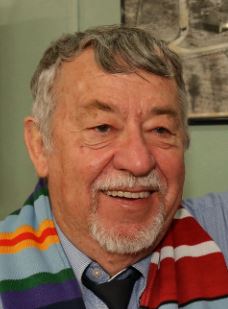

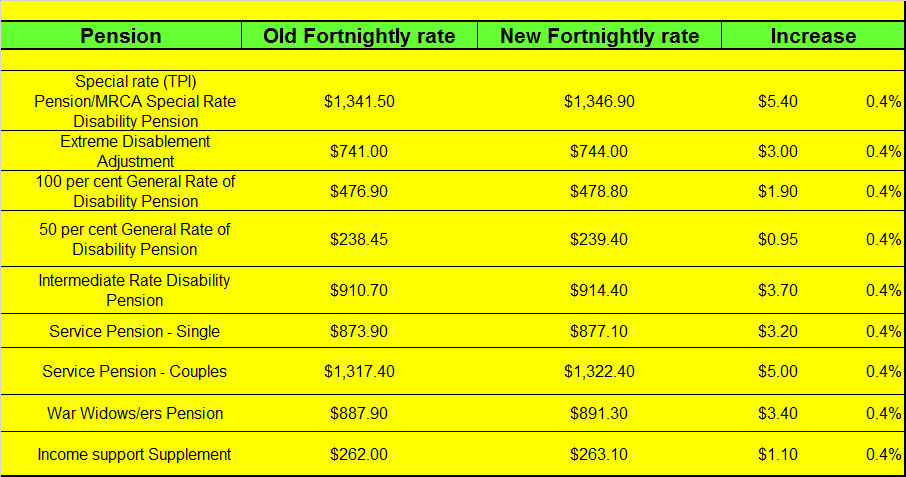
 drones could do the job just as well? And if the drone gets blown to
bits, most probably by another drone, who really cares? No humans
were harmed and a blown to bits drone has to be replaced which is a
good thing as it keeps some poor soul in a job making replacement
drones – it keeps the economy ticking over, drone warfare looks like
being a financial savour.
drones could do the job just as well? And if the drone gets blown to
bits, most probably by another drone, who really cares? No humans
were harmed and a blown to bits drone has to be replaced which is a
good thing as it keeps some poor soul in a job making replacement
drones – it keeps the economy ticking over, drone warfare looks like
being a financial savour.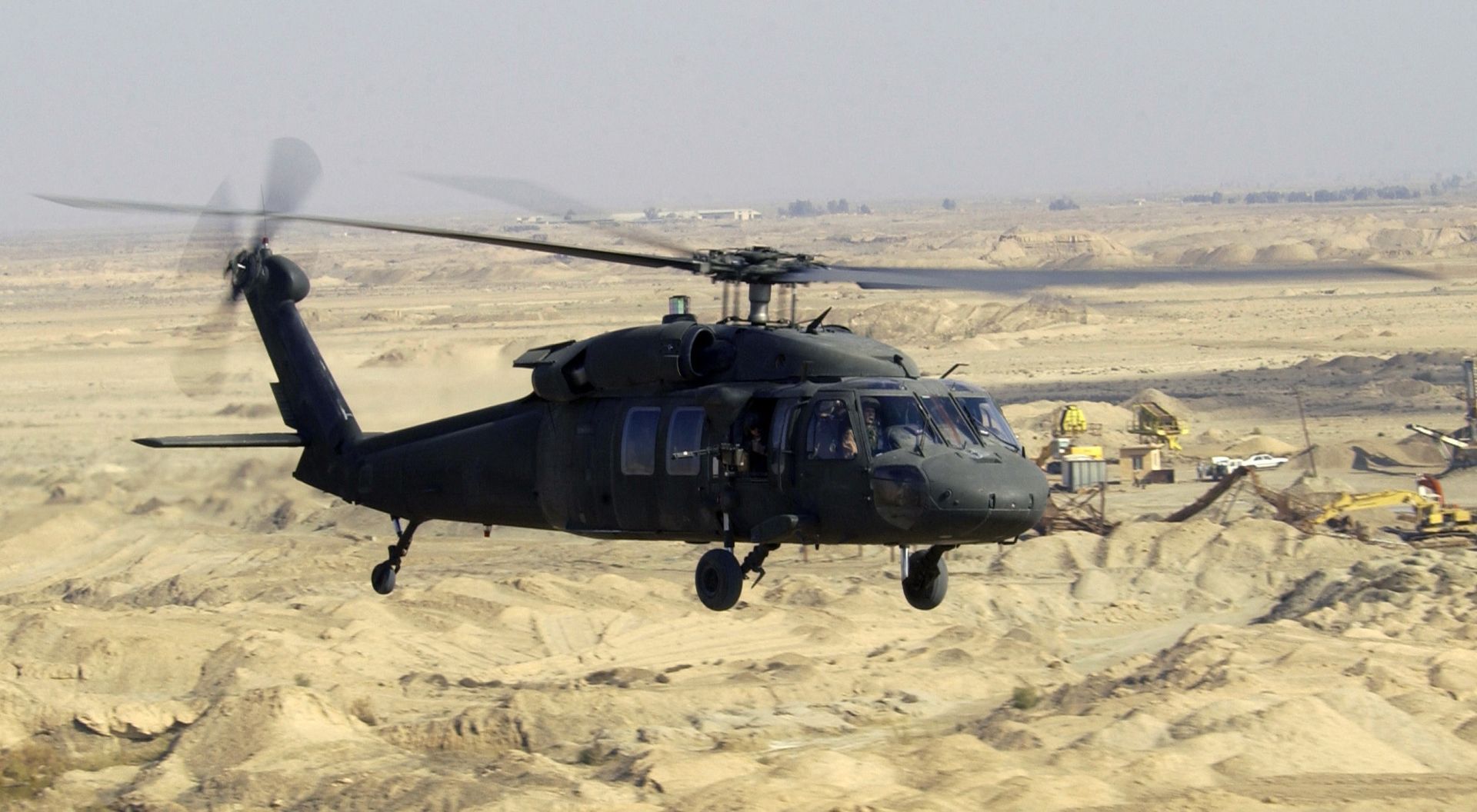

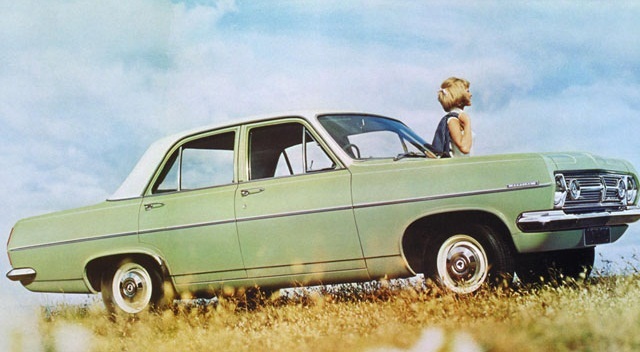
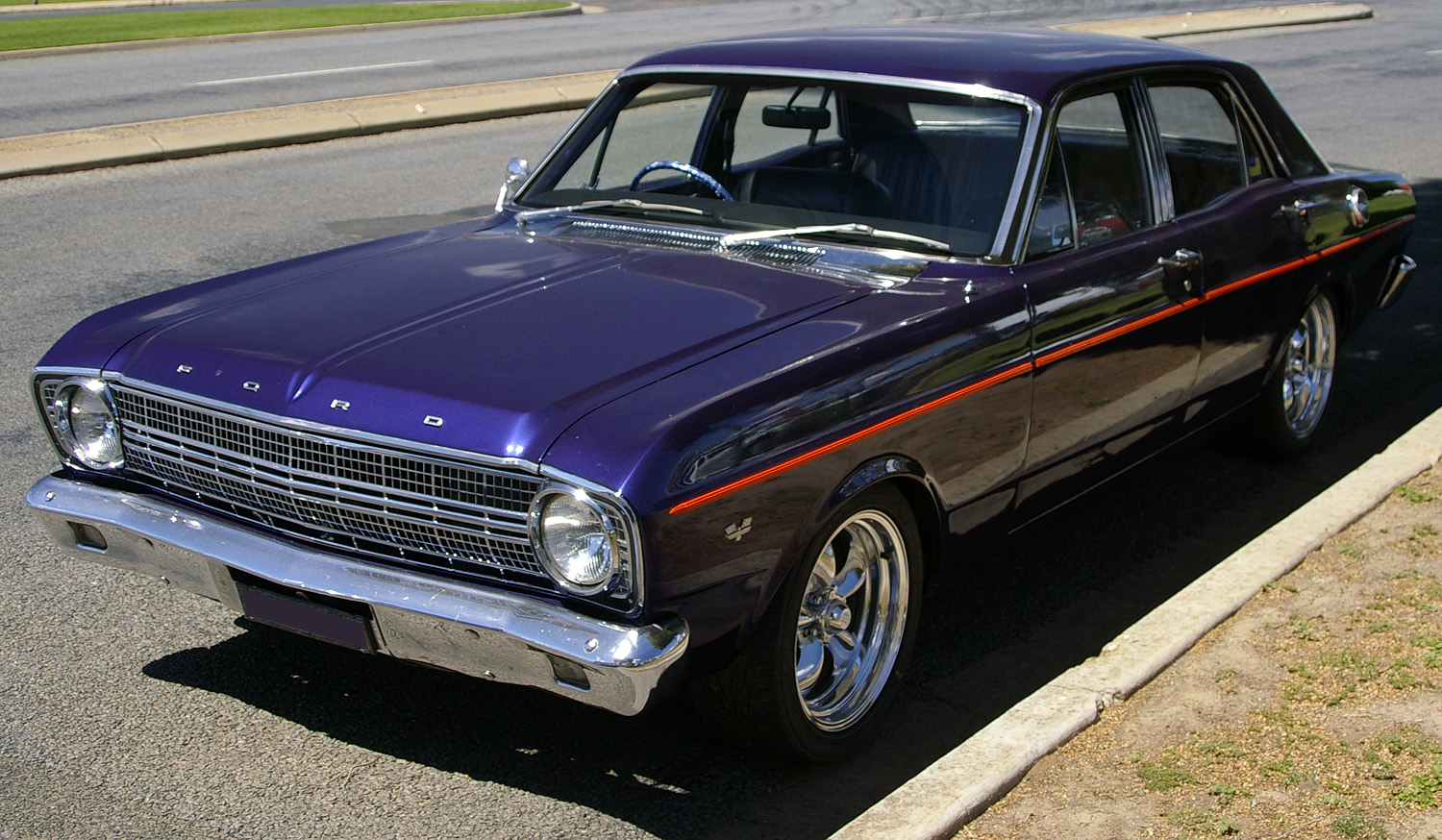
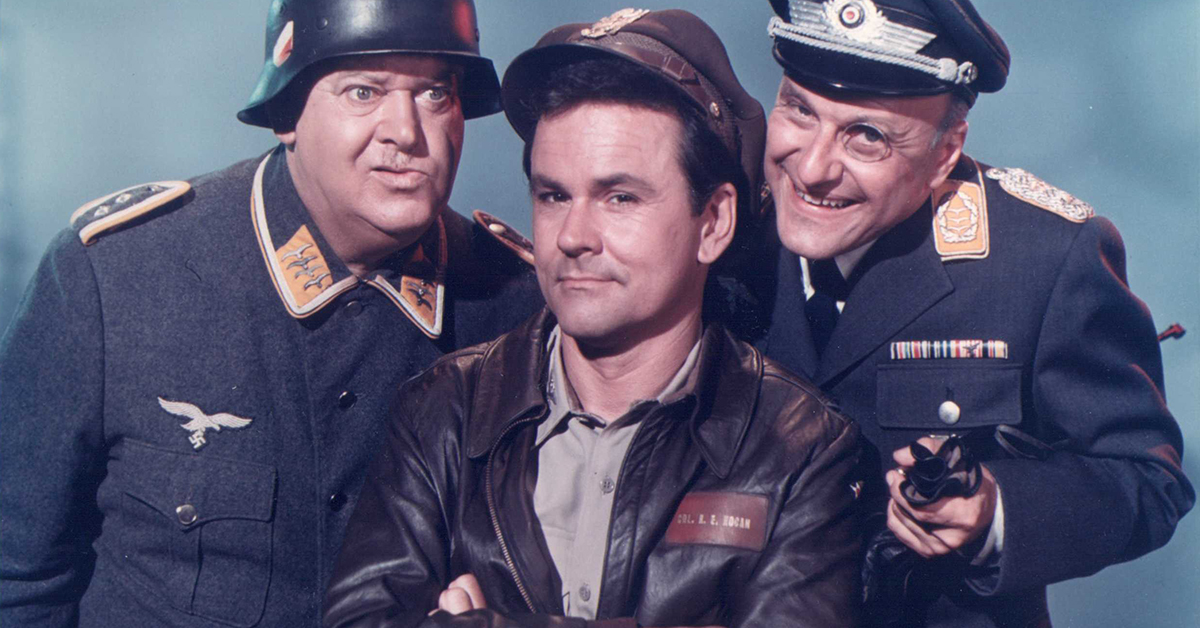


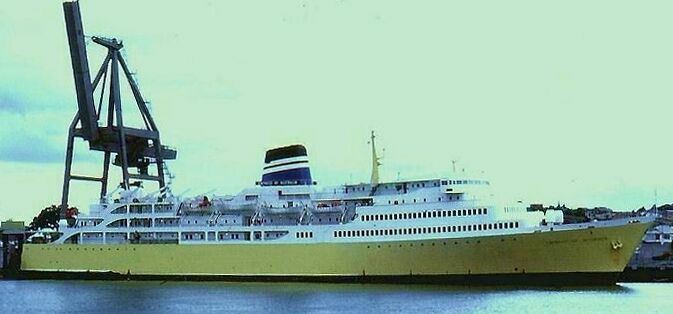
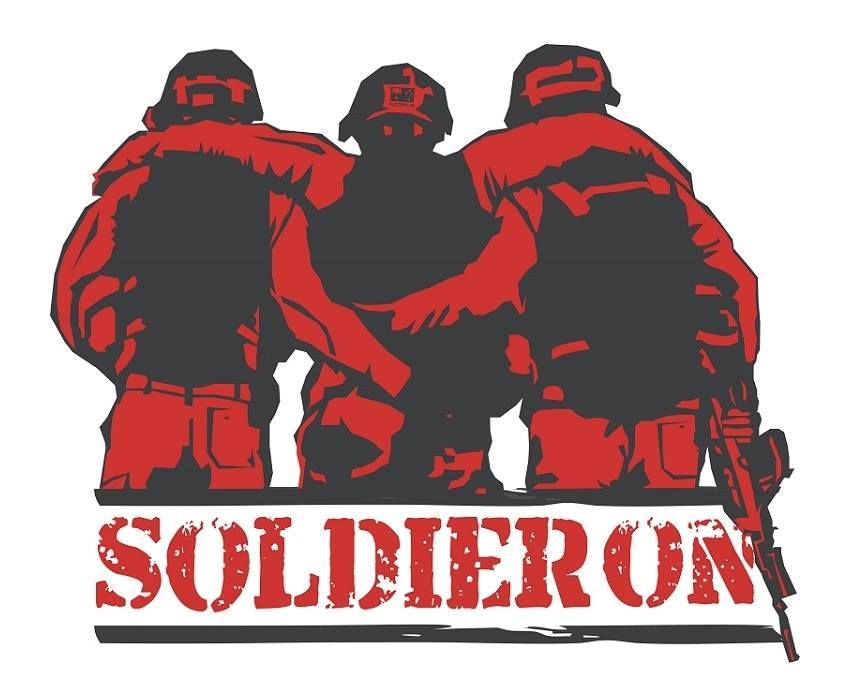 mean that the Minister for Veterans’ Affairs would be responsible
for all compensation Acts for ADF members. Currently, the Minister
for Employment has responsibility for the SRCA.
mean that the Minister for Veterans’ Affairs would be responsible
for all compensation Acts for ADF members. Currently, the Minister
for Employment has responsibility for the SRCA. 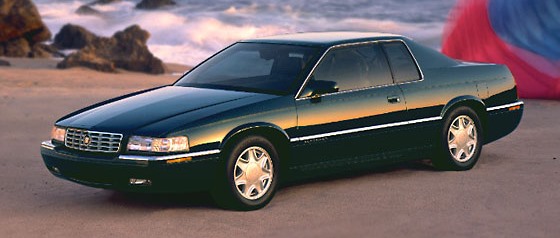
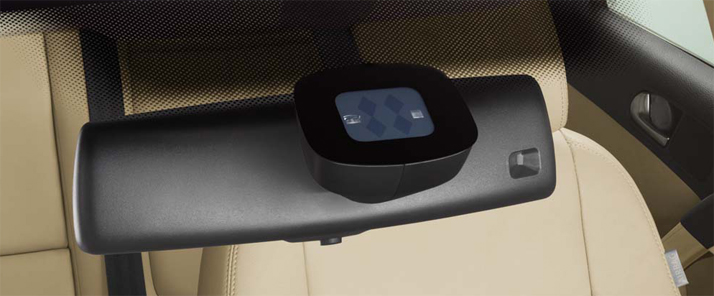
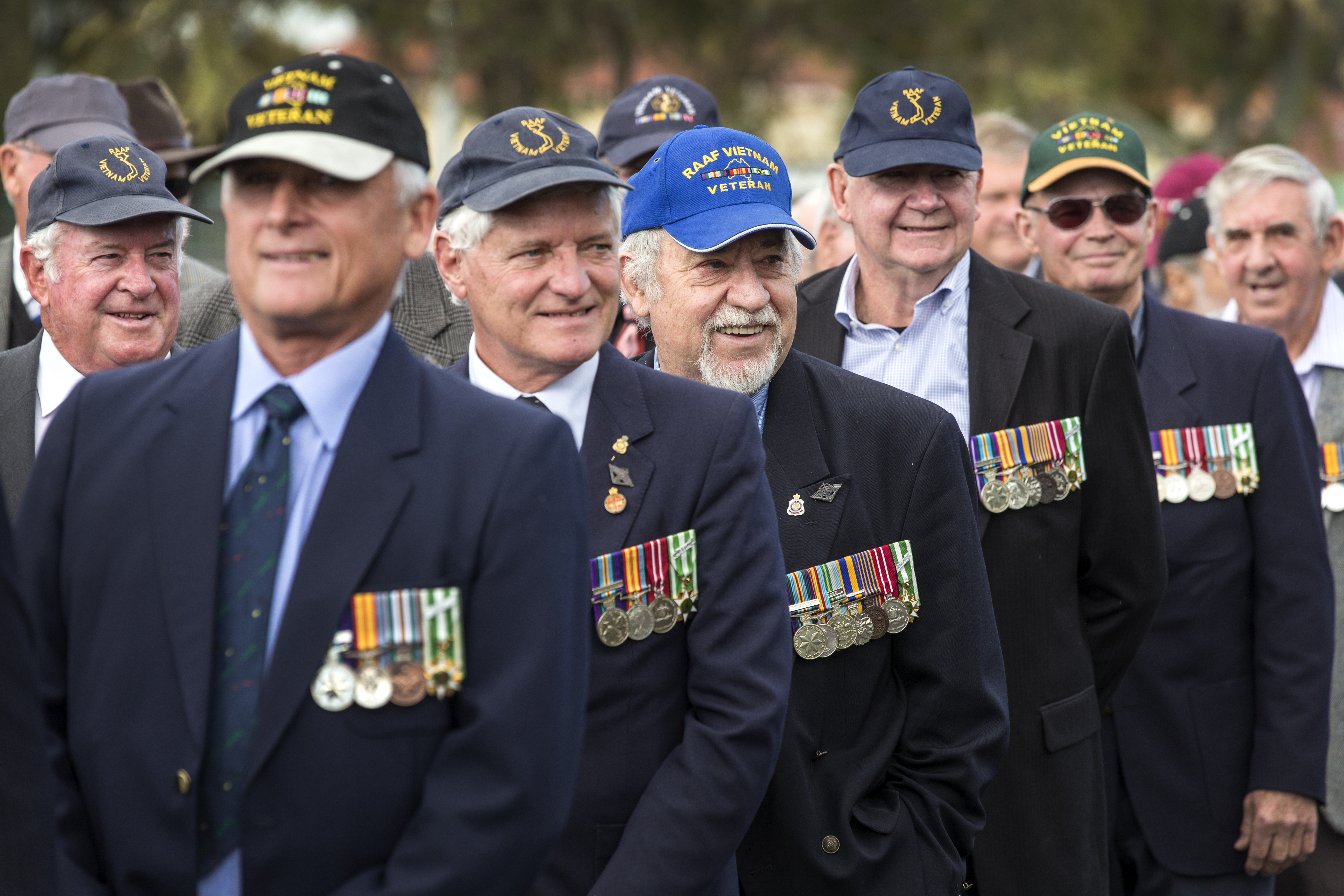
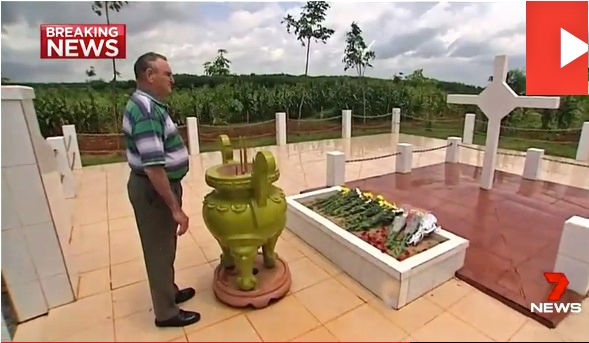 Payne
VC to the Long Tan cross and recorded an interview, which was
streamed to the news services shortly afterwards. Whenever people
visit the cross they need to go to the Long Tan police station and
register their visit. For the registration fee, they are loaned the
Long Tan cross plaque, which, when hung on the cross, indicates
official approval for the visit. A still from the recording shows
the plaque was not on the cross, leading to the conclusion that the
visit was not authorized. As an aside, the choice of Keith Payne VC,
our most highly decorated Viet Vet, as the person to represent the
occasion of the 50th Anniversary of Long Tan surely
reinforced the impression held by the Vietnamese that Australia was
“celebrating” a military victory rather than commemorating the war
dead.
Payne
VC to the Long Tan cross and recorded an interview, which was
streamed to the news services shortly afterwards. Whenever people
visit the cross they need to go to the Long Tan police station and
register their visit. For the registration fee, they are loaned the
Long Tan cross plaque, which, when hung on the cross, indicates
official approval for the visit. A still from the recording shows
the plaque was not on the cross, leading to the conclusion that the
visit was not authorized. As an aside, the choice of Keith Payne VC,
our most highly decorated Viet Vet, as the person to represent the
occasion of the 50th Anniversary of Long Tan surely
reinforced the impression held by the Vietnamese that Australia was
“celebrating” a military victory rather than commemorating the war
dead.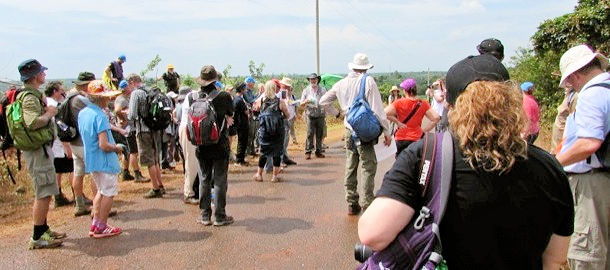 to
evict them, the Vets answered their questions on camera until the
police arrived. When the police arrived, they sent the camera crew
away but also forbade the Trek Tour to proceed to the cross. The
damage they’d feared had now been done!
to
evict them, the Vets answered their questions on camera until the
police arrived. When the police arrived, they sent the camera crew
away but also forbade the Trek Tour to proceed to the cross. The
damage they’d feared had now been done!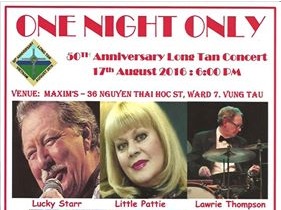 the cross area, the Tour group returned to Vung Tau to attend the
Concert featuring Little Pattie, Lucky Starr and others.
Unfortunately, it was marketed as the “50th Anniversary
Long Tan Concert” – a name once again drawing attention to the Long
Tan action for which the Vietnamese authorities feared a
“celebration” rather than a “commemoration”. Arriving at the Concert
venue, we found that the banquet had not been cancelled but the
entertainment HAD been – there would be no music or singing or
entertainment. There was no talk of a $refund for what had been a
very significant outlay by each person attending.
the cross area, the Tour group returned to Vung Tau to attend the
Concert featuring Little Pattie, Lucky Starr and others.
Unfortunately, it was marketed as the “50th Anniversary
Long Tan Concert” – a name once again drawing attention to the Long
Tan action for which the Vietnamese authorities feared a
“celebration” rather than a “commemoration”. Arriving at the Concert
venue, we found that the banquet had not been cancelled but the
entertainment HAD been – there would be no music or singing or
entertainment. There was no talk of a $refund for what had been a
very significant outlay by each person attending. 